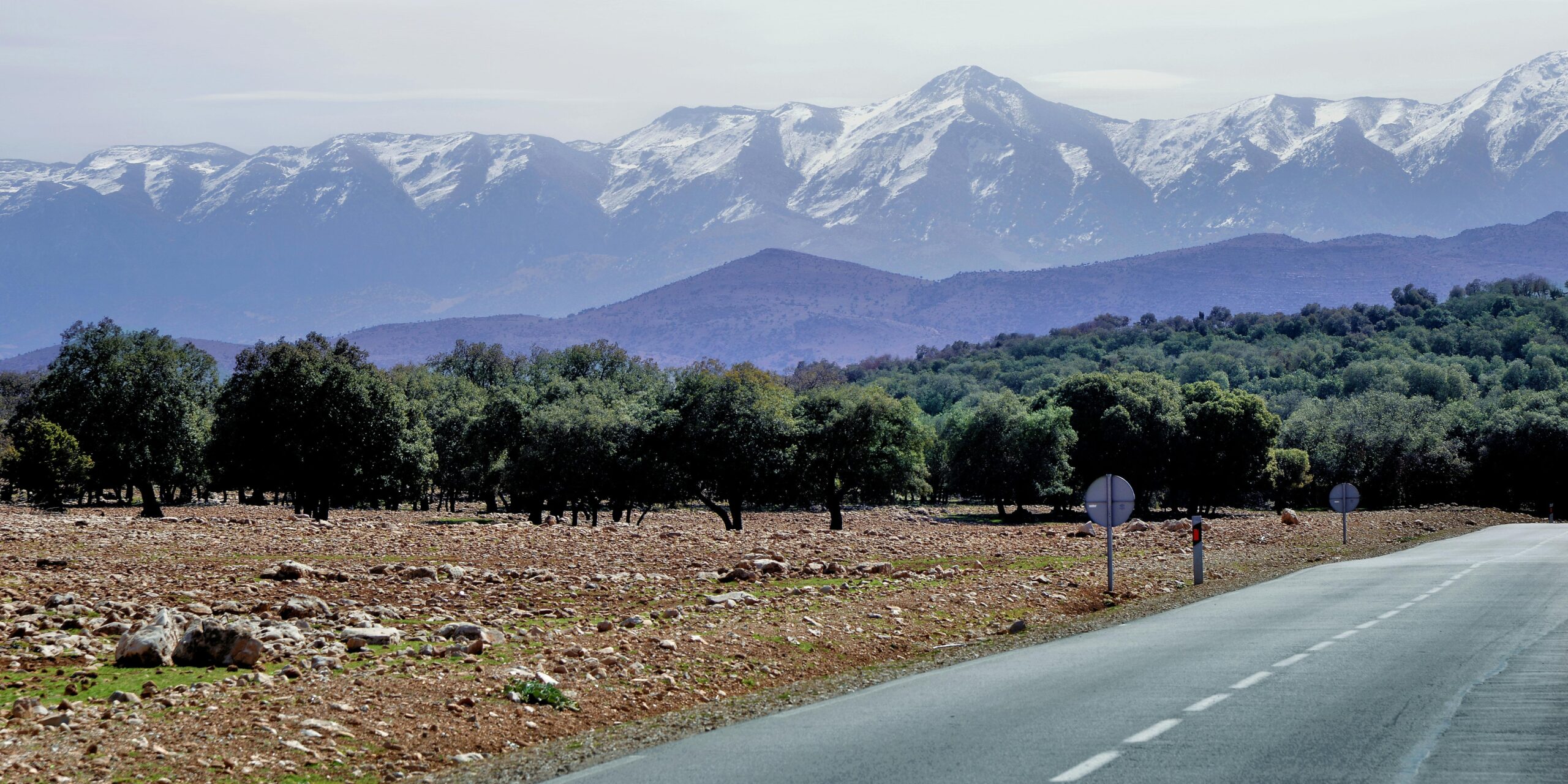Morocco has a diverse transport network linking cities and sights. For between-city travel, options include trains (ONCF), long-distance coaches (CTM, Supratours), shared taxis (grands taxis), domestic flights, and car rentals. Within cities, people use petit taxis, city buses, trams (in Casablanca, Rabat–Salé), and walking in medinas. Unique modes like camel rides (in deserts), horse-drawn caleches (in Marrakech/Fès), scooter rentals, and even bike-taxis (tricycles in Rabat) are common for tourism. Numerous ride-hailing apps (Careem, Heetch, Roby, Yassir, InDriver) complement traditional taxis.
Trains (ONCF): Morocco’s national railway covers most major cities (Casablanca, Rabat, Fès, Marrakech, Tangier, etc.).
- High-speed trains (Al Boraq TGV): link Tangier↔Casablanca (about 2h10) and Rabat↔Tangier (1h20).
- Conventional trains (Al Atlas): serve Casablanca–Marrakech (~3h) and other routes.
Trains are comfortable, air-conditioned, with 1st/2nd class. For example,
- Second-class: Casablanca→Marrakech costs ~150 MAD
- First-class about 250 MAD.
Pros: Fast (esp. TGV), scenic, safe.
Cons: No direct service to Agadir or Nador; tickets can sell out (book in advance online). You can buy tickets at stations or on the ONCF website/app.
Long-distance buses
State-owned CTM and Supratours (ONCF subsidiaries) offer reliable, air-conditioned coaches with reserved seats. Fares are generally affordable: e.g. Casablanca→Marrakech is roughly 80–130 MAD (8–13 USD). Longer routes like Marrakech→Fès run ~160–250 MAD. Buses stop at major cities and often at train stations. Pros: More coverage (towns trains miss), comfortable with 2 drivers on long hauls. Cons: Slower than air; schedules can change. Tickets can be bought on the CTM or Supratours websites/apps, or at ticket offices.
Shared (Grand) taxis
Larger Mercedes minibuses serving fixed intercity routes. Up to 6 passengers ride together. Fares are set by distance: e.g. a short rural hop might be ~5–10 MAD, a mid-range trip (Marrakech→Agadir) ~70–100 MAD per person. Grand taxis depart when full; you can also hire the entire taxi for your group at higher cost. Pros: Often quicker than buses (depart immediately full), more flexible stops. Cons: Cramped, no air-conditioning, no fixed schedule. Payment is cash and usually exact change.
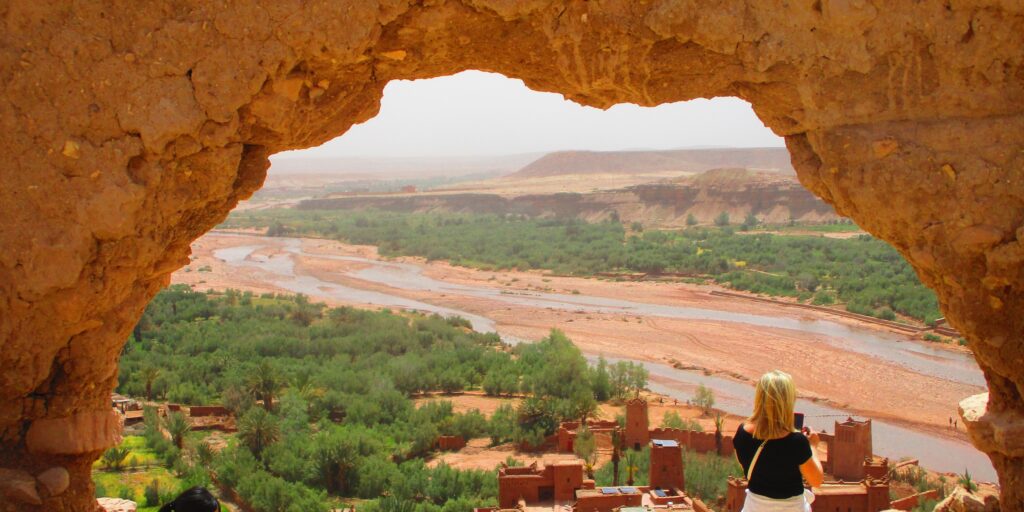
Domestic flights
Airlines like Royal Air Maroc (incl. Royal Air Maroc Express) and Air Arabia Maroc serve many Moroccan cities. (Since 2024, low-cost Ryanair also flies between Agadir, Essaouira, Fès, Marrakech, Nador, Ouarzazate, Oujda, Rabat, Tangier, Tetouan, etc.) Flight time is short (e.g. Casablanca→Rabat ~30 min), but fares often run higher (typically comparable to or above train prices). Baggage rules vary by airline.
Pros: Fast;
Cons: Airport transfers, security delays, and often pricier than ground travel.
Book flights on airline websites or search aggregators.
Car rentals
Available at airports/cities. Book ahead via global agencies or local sites. A car gives full freedom to explore rural areas and the Atlas Mountains.
Pros: Flexible itinerary, access to remote areas.
Cons: Chaotic traffic (especially in big cities), variable road quality, tolls (e.g. Casablanca–Marrakech ≈80 MAD one-way), and strict police enforcement.
Drivers must have an appropriate license. Use GPS apps (Google Maps/Waze) and carry cash for tolls. Rental usually requires full insurance and deposits.
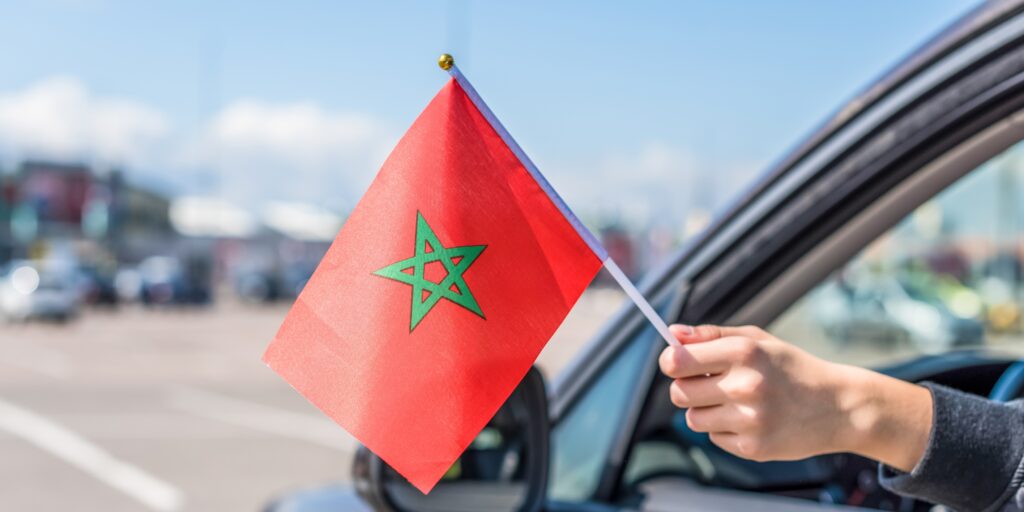
City Transport
Within cities, petit taxis (small 4-seaters) handle most short trips. Colors indicate city: Casablanca/Agadir (red), Rabat/Tangier (blue), Marrakech (orange). Always insist on the meter. The minimum fare starts at 7 MAD by day (≈$0.70), rising to about 10–12 MAD at night. Speak up if the driver tries to fix a higher fare. Petit taxis fit ≤3 passengers; longer rides (between neighborhoods) or large groups may require hiring multiple taxis or a larger vehicle.
- City buses and trams: Major cities run extensive bus networks and modern trams. Casablanca has a 2-line tramway; Rabat–Salé also has two tram lines (Sale–Rabat). A single tram/bus ticket is cheap (~4–8 MAD) and can be bought at machines. Service is generally safe but can be crowded at peak times. Buses cover cities like Marrakech, Fès, and Agadir too; local fares are only a few dirhams (often 4–6 MAD). Always have small change on hand. Apps like Google Maps (with transit overlay) or Moovit can help plan routes.
- Walking: The best way to explore medinas and small towns. Moroccan city centers and historical districts are compact and often pedestrian-only. Shoes-on scams can occur (vendors pretending to wrap your feet for a fee), so politely decline unwanted assistance.
Motorbike/scooter rentals are popular in Marrakech and coastal resorts. Daily rates for small scooters start around 100–150 MAD. You must have a valid motorcycle license and always wear a helmet (enforced by police). Motorbikes help reach beaches or rural trails, but beware chaotic traffic and poor lighting on some roads. In Rabat, “bike-taxis” (tricycle riders) offer short rides in medina alleys.
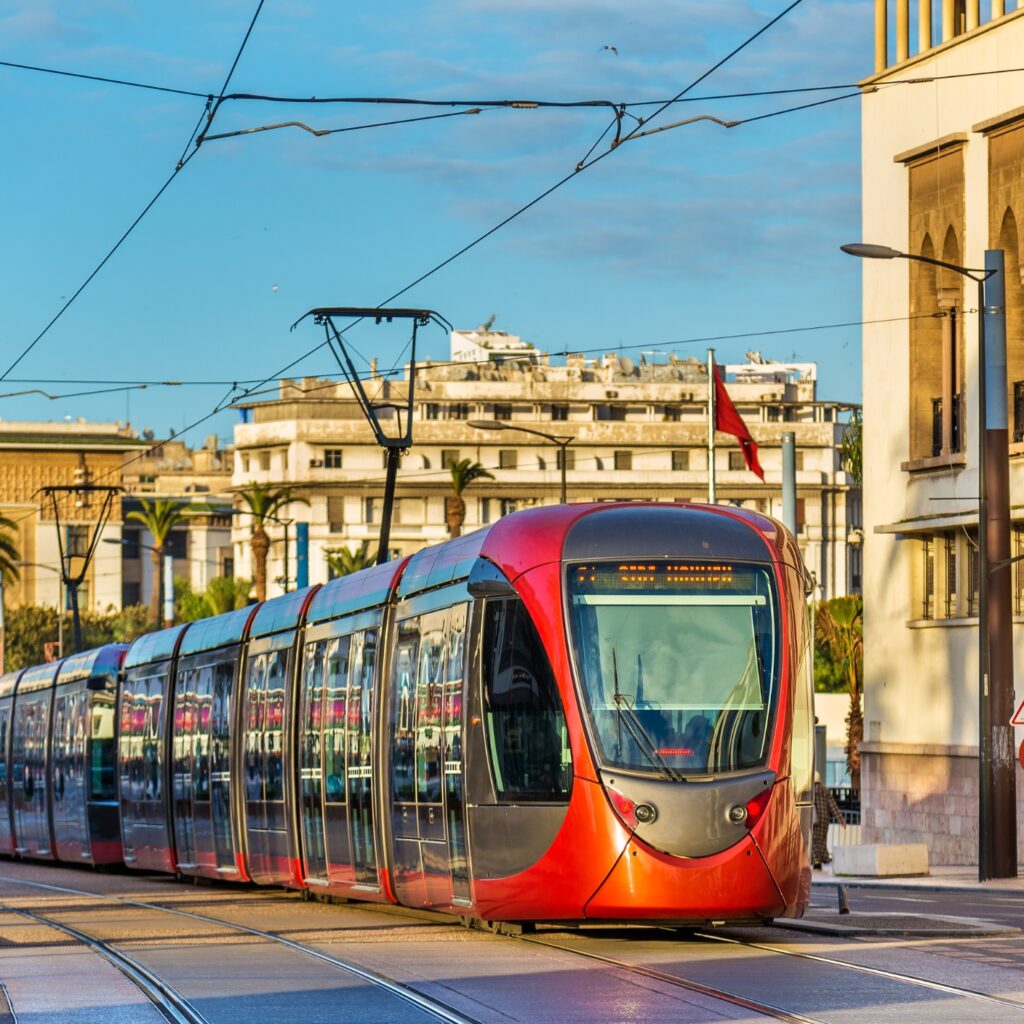
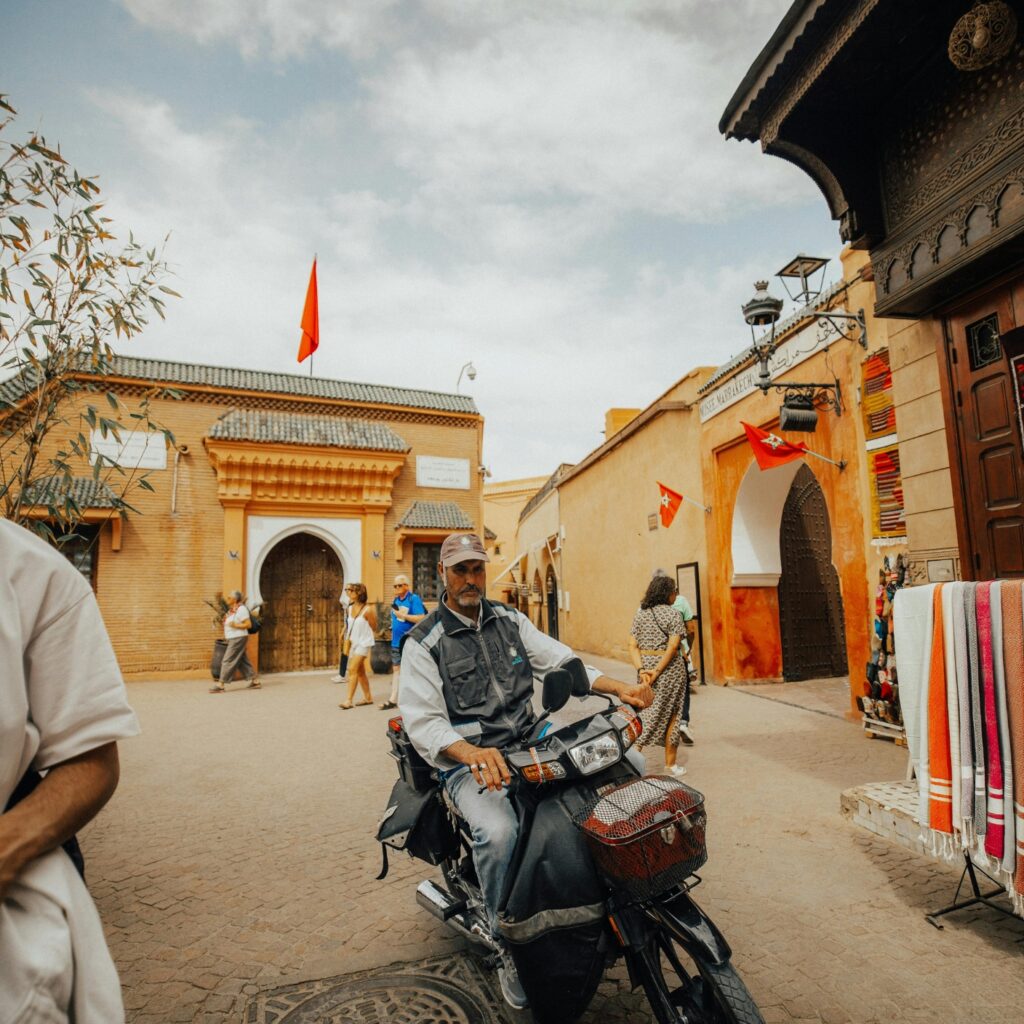
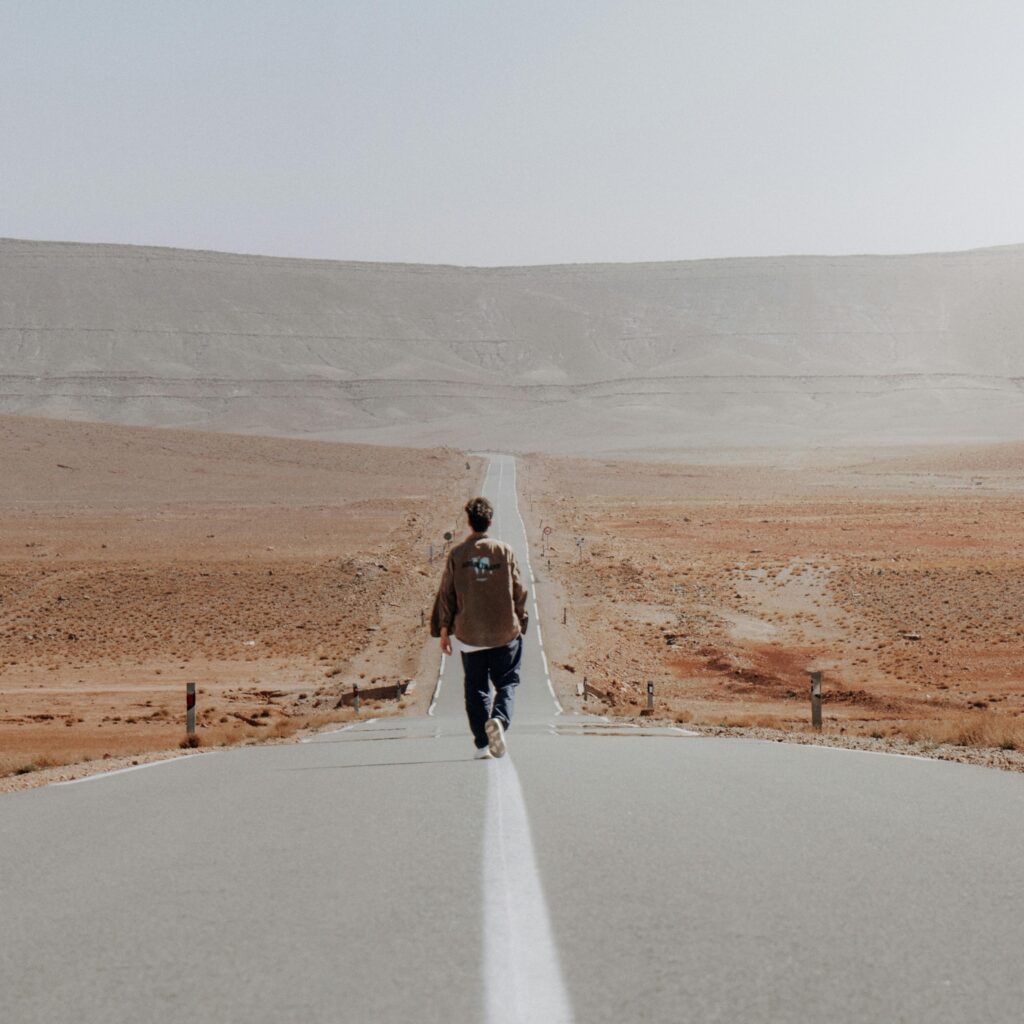
Cultural Transport
For a taste of local heritage, consider a camel ride or a horse-drawn calèche. In desert regions (Erg Chebbi near Merzouga, Erg Chegaga near Zagora), camel treks are a highlight, often arranged as part of overnight camp tours. Prices vary by duration, but expect on the order of hundreds of dirhams per person for an hour’s ride (many travelers report ~200 MAD for a short Merzouga ride). In Marrakech or Fès, horse-drawn caleches offer city tours (e.g. around ramparts or palmerie). These cost roughly 150–300 MAD per hour (always negotiate the rate up-front). Be sure the carriage is in good condition and the horse is treated well. In the medina, strolling on foot is also a charming alternative.
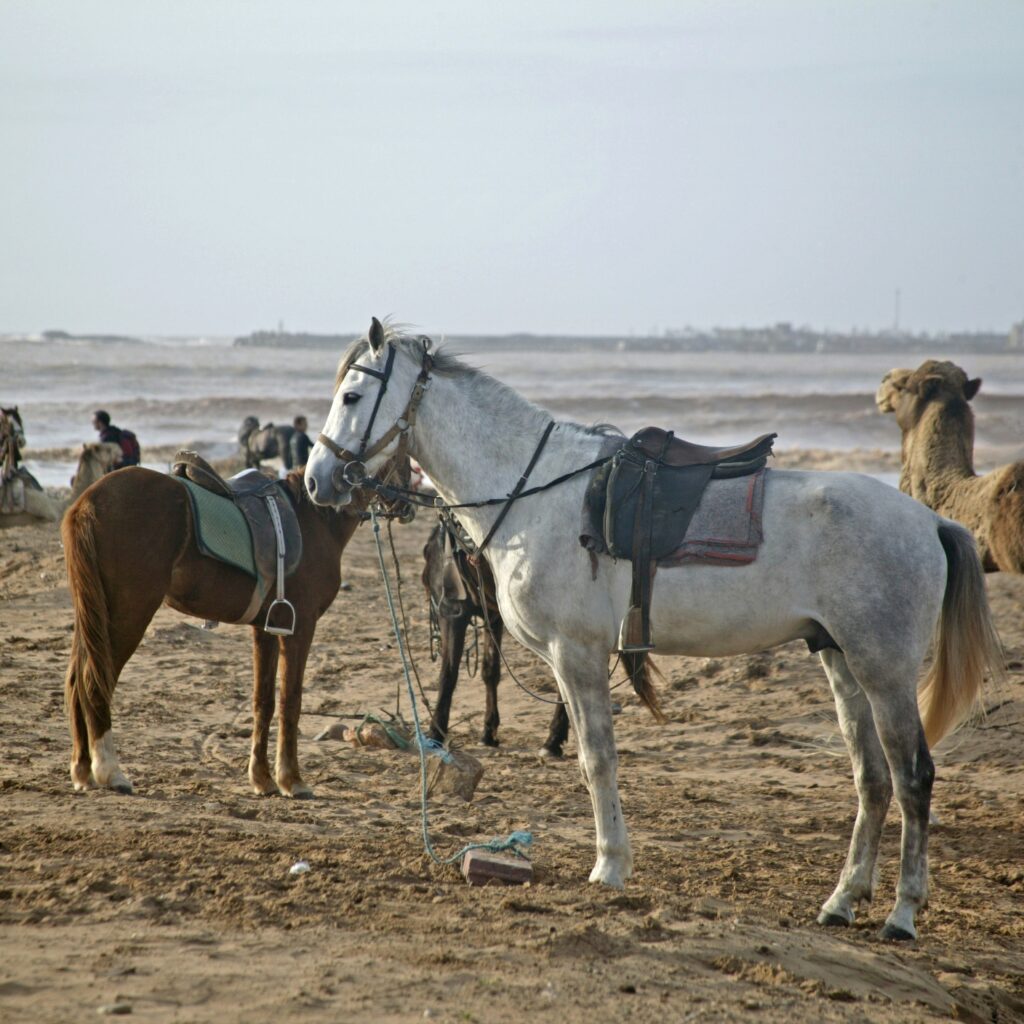
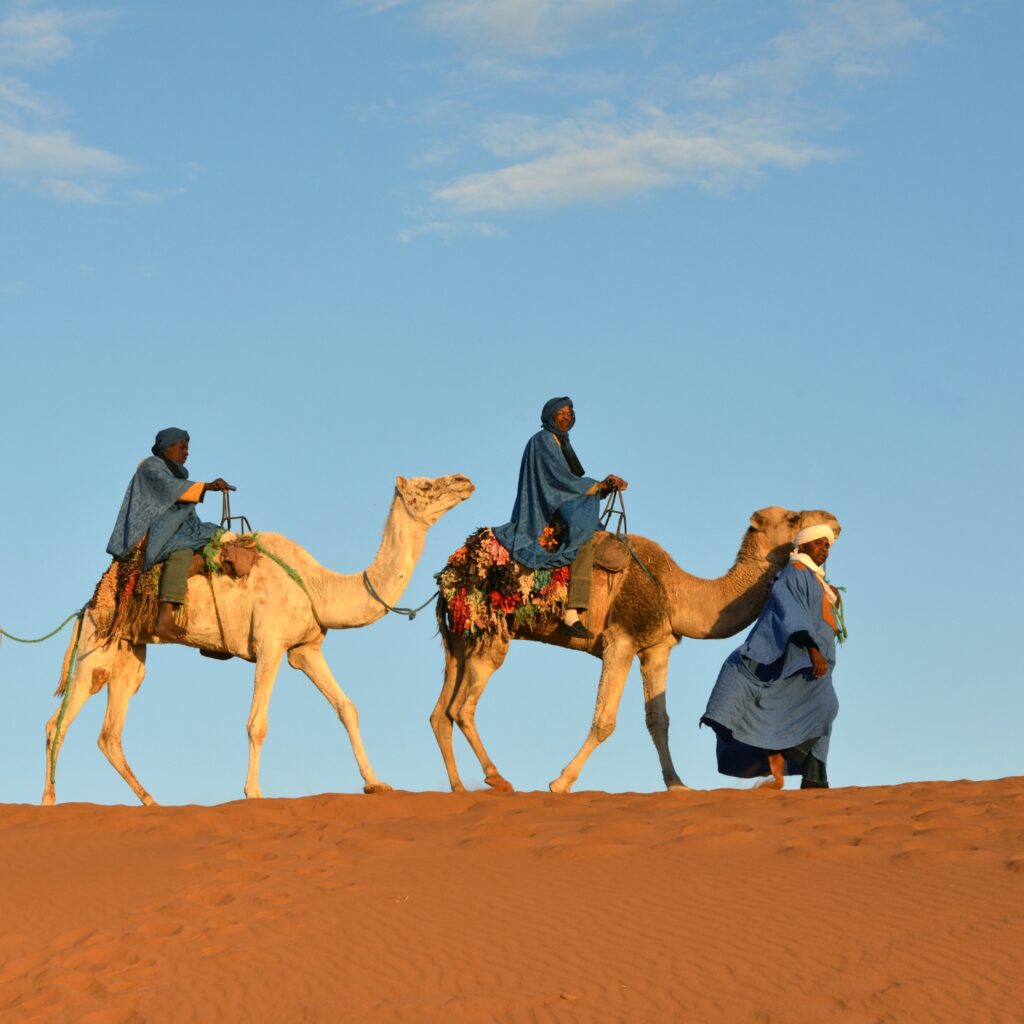
Taxi Apps & Transfers: Uber is not available (it withdrew in 2018), but locals and tourists use several ride-hailing apps:
- Careem – Operates in Casablanca, Rabat and nearby cities. Fares are generally higher but it’s reliable and supports card/cash.
- Heetch – Popular in Casablanca, Marrakech, Rabat. Driver-friendly, usually cheaper fares; cash payment.
- Roby – A Moroccan startup covering Casablanca, Marrakech, Agadir, Raba. Connects only with licensed taxi drivers at regulated rates (no surge pricing).
- Yassir – Algerian-based app now in Morocco (from 2019). Good for late-night rides and broader coverage.
- InDriver – Allows passengers to name their price; active in all major cities. Payment is cash.
Aside from apps, private transfer services (booked via travel agencies or Transfer companies) can arrange drivers for airport pickups or cross-country trips. These usually charge higher flat rates but offer convenience for families or large groups.
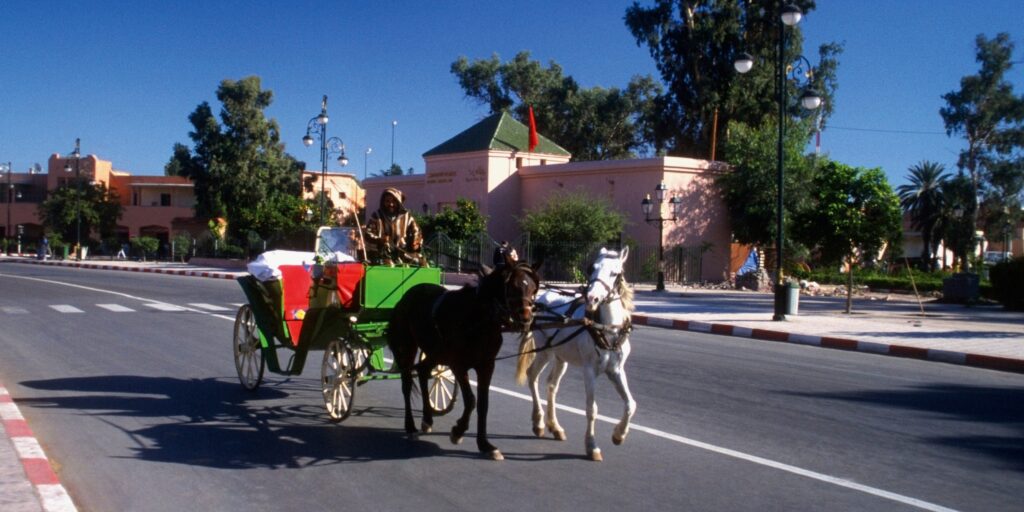
Planning Tools
- Use Google Maps or Apple Maps for real-time routing: turn on transit overlays to see trams and buses. Several Moroccan cities are covered by Moovit or local transit apps.
- For trains and coaches, the official websites/apps are best: ONCF (oncf.ma or ONCF Voyages app) for trains, and CTM/Supratours websites for buses.
- Taxi fare estimator tools (e.g. TaxiFareFinder) exist but verify currency.
- Many payment apps (Credit cards) work at airports and hotels, but carry cash (MAD) for petty fares.
- For hiking or desert trips, a GPS app and offline maps are recommended.

